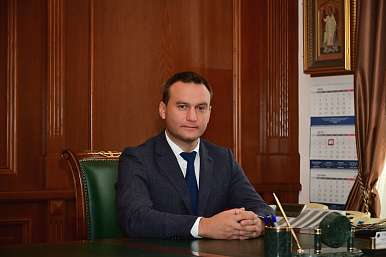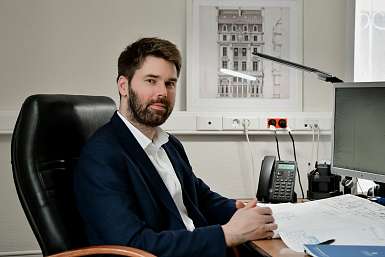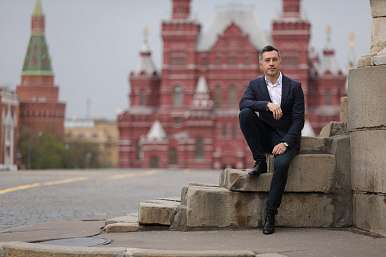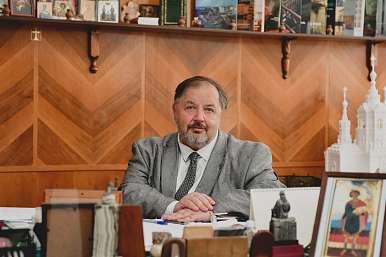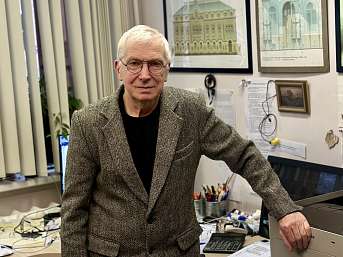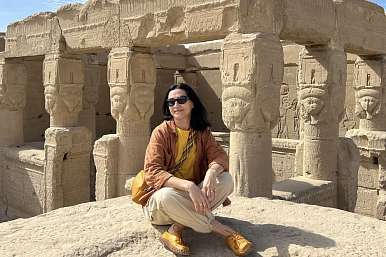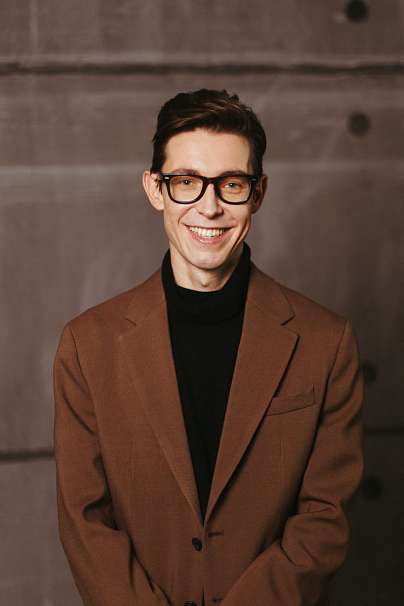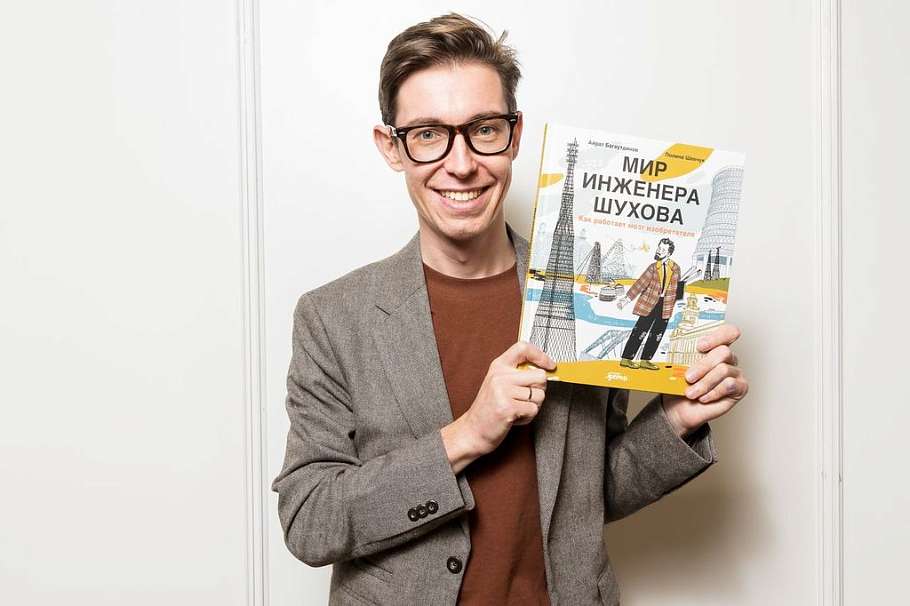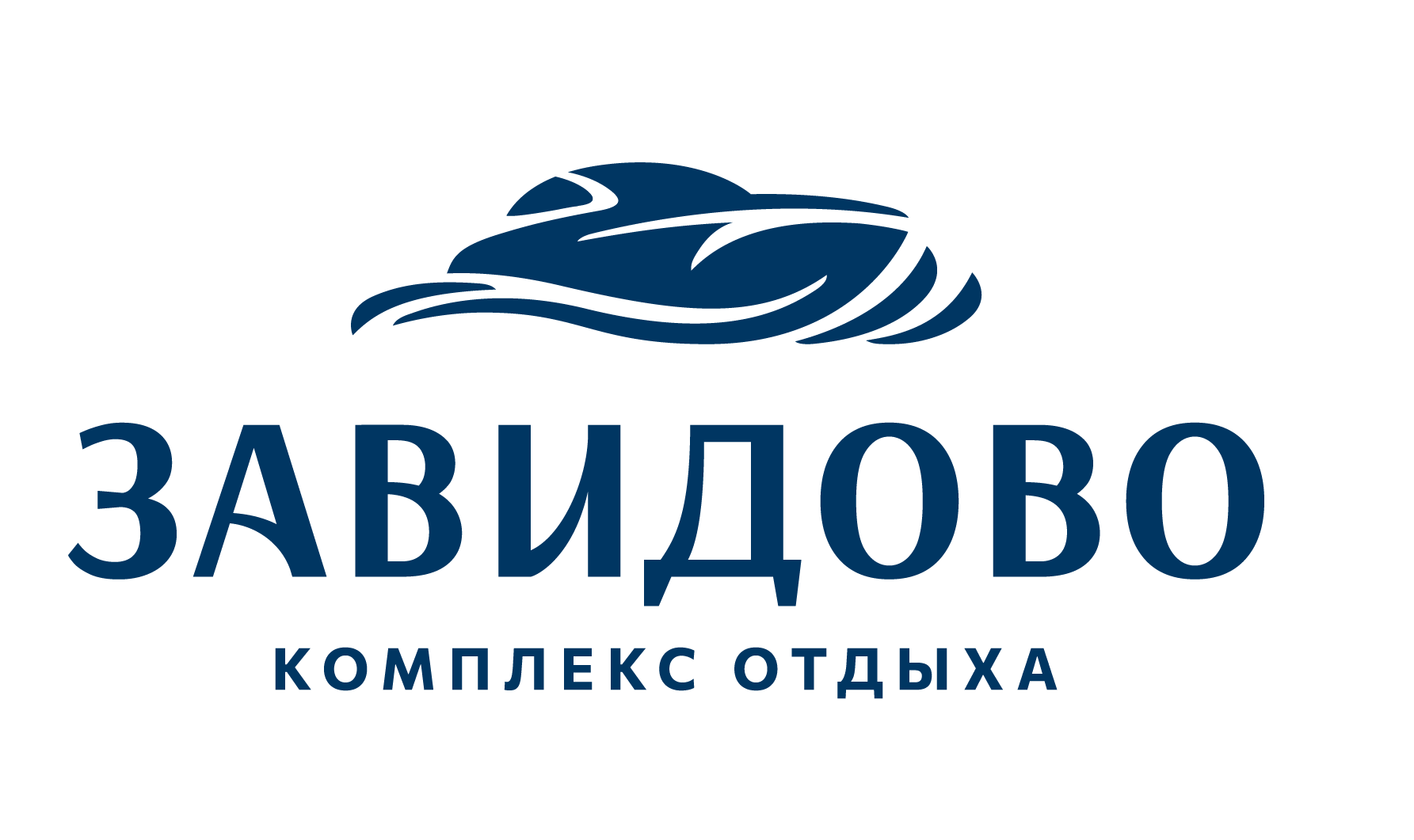Moscow is a focal point for a countless number of guidebooks and books, programs, films, podcasts and blogs. It would seem that nothing will surprise its residents and even tourists. Yet, it is not so! Our interviewee has changed the vision of architecture and Moscow as a whole. Ayrat Bagautdinov is an architecture historian, tour guide, founder of the Moscow through the Eyes of an Engineer project, laureate of the Moscow Mayor’s Prize for services in tourism, and author of many books and guidebooks. Read Ayrat’s interview on the website of GlavUpDK under the MFA of Russia (Cultural Heritage Sites) to learn what is good about contemporary architecture, what is the mission of art and how the unique Moscow through the Eyes of an Engineer project, which celebrates its tenth anniversary this year, began.
Ayrat, you offer, perhaps, the most unusual tour routes, which are incredibly popular. Please, tell us how it all started.
It looks as if my career was initially aimed at that. It all started almost 15 years ago. Having moved to Moscow in 2011, a friend of mine and I launched a travel agency, Moscow Free Tour, to deal with foreign tourists. I have long dreamed of trying myself as a tour guide, but I only worked with tourists. When the project became popular, we hired and trained some tour guides and automated our processes, and it became clear that we had to do something else.
Then I remembered my long-time passion. I mean the wish to unite people, create cultural groups and involve local residents in them. For example, I had a similar experience in my home city Kazan, where I used to organize lots of cultural events.
Inspired by this idea, I began conducting classical tours under the Walking around the City brand (2012-2013). The project was not much different from the classic Moscow practice of that time as we also offered walks along the Patriarch’s Ponds and talked about Bulgakov, tours to Prechistenka and Ostozhenka Streets, plus some other geographical routes. However, I quickly lost interest in this format, realizing that it was not exactly what I wanted.
I was always in search of something fresh. And I decided that my degree in civil engineering would help me with that, because Moscow is something more than just owners and architects of certain mansions. Then I got an idea to talk about buildings from a builder’s point of view – building materials, slabs and structures, and an architect’s intention. But I thought for a long time about where to start. I even once complained to my friend Asya Aladzhalova, who was in charge of the “Moscow That Does Not Exist” tour program, that I had started doing research, but I just couldn’t start giving lectures. And Asya suggested: “Ayrat, my project involves a series of lectures. Let us schedule a date for your lecture just now! Are two months enough for you to prepare? What about December 4? You have to write an announcement. I will add your lecture to the program, and you will not be able to get away with it. You will just have to start doing something!”
It was an inspiring “kick”! (laughing). Since I had to immediately name my lecture somehow for the program, I suggested: Moscow through the Eyes of an Engineer. That was how both the project name and its concept were born in one evening.
After that I was offered to develop an engineering master class for children, we started joint educational projects. And then I gave tours under my own Moscow through the Eyes of an Engineer brand.
Your excursionists are not only Russians, but also overseas guys. Have you noticed what attractions in Moscow impress foreigners the most?
I will not reveal the secret, but over the past four years both a typical tourist and Moscow itself have changed a lot. By the way, the Moscow Free Tour project has suspended after the outbreak of the Covid-19 pandemic (approx. 2020). Today we welcome mainly Chinese, Arab and Indian tourists, but previously we had guests from the U.S. and Western Europe; a trip to Russia was something like an adventure for them. I mean problematic and expensive visa and lots of stereotypes about our home country. In the end, as in any adventure, tourists were impressed by everything! Even thrice-told places, such as Red Square or St. Basil’s Cathedral.
We have always strived to go beyond and show that Moscow can give much more than just bright guidebook pictures. Walks along the Ivanovskaya Gorka, Zamoskvorechye or Chistye Prudy alleys, their gateways with 17th-century chambers – we surprised our tourists with these and other remarkable routes.
In addition, in the Moscow through the Eyes of an Engineer project, we cooperated with architects, architectural firms and engineering companies who came to Russia or worked in local representative offices. Those clients wished to get to know about architecture from a professional point of view; constructivism was of particular interest. So, we offered tours to both the Narkomfin Building and the Melnikov House. The Zaha Hadid Architects team even had a chance to visit the latter before the restoration. Importantly, a surge of interest in this style occurred in 2017-2018, the anniversary of the October Revolution. At that time, many countries held dedicated exhibitions, for visitors to learn about avant-garde art and, in particular, constructivism.
Now we deal with tourists very seldom, yet there are exceptions. For example, last Friday I had the opportunity to work with tourists from China as I gave them a boat tour. By the way, Chinese tourists are very grateful and responsive. It is really great to work with them.
What is the story with the Arab sheikh to whom you gave a bicycle tour? Is this a local “legend” or have you really had such an experience?
We collaborate quite a lot with hotels and concierge services. In addition to architecture dedicated tours that I already mentioned, we offered bicycle rides. And so, the Four Seasons chief concierge approached us with a request to organize an excursion for their special guest who turned out to be the owner himself. He actually was a fan of cycling, so the hotel team decided to take him on a bike ride around the capital. We developed a three-day program covering multiple architectural styles and districts. I honestly admit that the walk was very extravagant as the sheikh was accompanied by a retinue of 30 people, employees in cars and a security service throughout the entire journey. A whole motorcade!
Your excursionists are able to get into unique closed buildings and each of the routes is unrepeatable. Can you explain to our readers how you create new tours?
Often the routes are inspired by personal stories. For example, our Shabolovka avant-garde art walking tour. I lived in this area, which was very significant for me, for several years. A year after the move, locals started their struggle to preserve the Shukhov Tower. Our compatriots, such as historians and architects, and foreign experts joined it. Even Zaha Hadid and Norman Foster left their signatures on the collective letter for the preservation. Of course, I could not stay away. I actively participated in the events, while simultaneously immersing myself more and more in Shukhov’s works and in avant-garde art.
I no longer live in this area, but the route still remains very significant for me. It is a nostalgic journey and an opportunity to think over the professional path I have traveled.
And, of course, our most successful routes focus on something that has not become mainstream yet, such as architecture of the second half of the 20th century. For example, walking routes along Dolgorukovskaya and Belorusskaya. In addition, it is always great to talk about contemporary architecture, to show that Luzhkov neighborhoods are not only some kind of squalor, but amazing buildings built by outstanding creators.
In general, I am sure that knowledge goes hand in hand with love. The more you know something, the more you love it. The more I talked to architecture critics and architects, the more I get fascinated by contemporary architecture.
Who is the best tour guide for you? What talents should he or she have?
Naturally, as a person who has been teaching tour guides for 10 years, I have an idea of the key skills for a good guide. I will highlight the most important ones. I am convinced that a guide is a researcher in the first place. And he or she should be able to use verified sources, expand their list, involving archival research, oral history, and museum holdings. Each tour can be a research. Just set right goals for yourself, discover patterns, and not simply retell what you have read!
But you should not limit yourself to generally accepted sources of information – anything can enrich your tour! Well, you may demonstrate an Avito packaging of cookies from the early twentieth century – at least in the appropriate context. This is a good evidence of the bygone era, too.
And finally, in the ideal world, a tour should be a self-development springboard, stuff used to develop critical, analytical and logical thinking and other skills. And, to be honest, I am convinced that contact with culture cleanses the soul. So, I see our mission to increase such points of contact.
Could you tell us how one can develop own cultural style and vision? What do you think is a key? Is it observation skill or the environment that forms personality?
The environment is not only material world artifacts, such as buildings. For example, my environment was shaped by books in my parents’ house, reproductions of paintings by my favorite artists I used to download from the newly emerging Internet. I created and expanded folders on my computer with such content. This was my personal gallery. This was my way out of looking at the world not through broken windows, but through beauty. And today this is more accessible than ever thanks to the Internet.
Good architecture certainly contributes to formation of an aesthetic sense. And this concerns not only those who are lucky enough to live and work downtown and come into contact with cultural heritage every day. In Moscow, even in remote areas, you can find outstanding Art Nouveau artifacts. This is the luxurious building of Shirshov Institute of Oceanology and the DNA helix shaped buildings of Shemyakin and Ovchinnikov Institute of Bioorganic Chemistry. I could go on for a long time! Take, for example, the library of Pirogov Medical University, which is decorated with an incredible mosaic by L. Polischuk and S. Scherbinina. And all those are examples of unique architecture that can be found outside the Third Ring Road.
Indeed, architecture of the 60s and 70s should be studied specially as only then you begin to understand and feel this style. In my opinion, modernism is undervalued; that is why we pay a lot of attention to it in our programs. And we are not just talking about buildings in contemporary Russia. We offer similar tours in Tashkent, Almaty, Yerevan and Tbilisi because in the former Soviet republics there are lots of similar artifacts.
In general, my love for modernism is a good example of the environment. I spent my childhood not just in uptown Kazan, but in a modernist neighborhood of the 70s and 80s. So, from my childhood I absorbed the cultural code of what I talk about today in my excursions with similar conservatories – atriums with monstera tubs and date palms surrounded by fountains, and mosaic flooring of marble chips. The same techniques as in Moscow, but on a smaller scale! That is why it is so important to look around you, pay attention, study and get interested. Familiar things often contain more meaning than they seem.
As an engineer, how do you see or imagine Moscow in 20 years?
That is no problem! I interviewed Sergey Kuznetsov (Chief Architect of Moscow), and he explained everything. There is a three-dimensional model of the city, which displays all buildings and all innovation in real time. I think that soon Muscovites will be able to see it with their own eyes to understand in which direction the city is growing and developing.
Of course, I would like to see high-tech industry facilities preserved in the city. Judging by the active transformation of industrial spaces and plans for the development of the Northern River Port, we are moving in the right direction. As for the embankments, they contain enormous recreational potential, which remains unused so far! Take, for example, the Yauza Embankments project.
Your lecture dedicated to the Ryabushinsky Mansion, one of Fyodor Schechtel’s works, is available on the Arzamas website. Do you like his other works? What is that captivates you about them?
Fyodor Schechtel was a genius! I really like Morozova’s Mansion on Spiridonovka Street. This is an example of the architect’s incredible ingenuity and the virtuoso work of Mikhail Vrubel as an invited artist. In addition to the Ryabushinsky Mansion on Malaya Nikitskaya Street, I would mention a building that was erected in Kropotkinsky Lane for Aleksandra Derozhinskaya. They seem to follow the same architectural concept. In those buildings, Fyodor Schechtel applied the best of the Art Nouveau techniques.
Can you share your creative plans, please? What are you going to amaze us with in the future?
There are a lot of creative plans! We are writing a book for the 10th anniversary of our company. Readers will learn about how we develop our tours, from kid-friendly master classes to wine tastings. There are other exciting things as it will explain how to start a culture-oriented business.
In addition, together with Alpina Publisher we have launched a series of books for children The Library through the Eyes of an Engineer. And very soon I will publish a book about bridges.
We do not stop there. Now I am starting to write a book about what ideal cities and urban spaces looked like a hundred years ago, in the opinion of their residents.
And, of course, we do not forget about our tours. I am actively developing a program highlighting architecture of Beijing and Shanghai with a tour to China scheduled on October. We are also developing a program called Feel Like a Tourist in Moscow. It has everything you may want, such as a check-in at a hotel and a rich excursion program with zest and surprising things.
